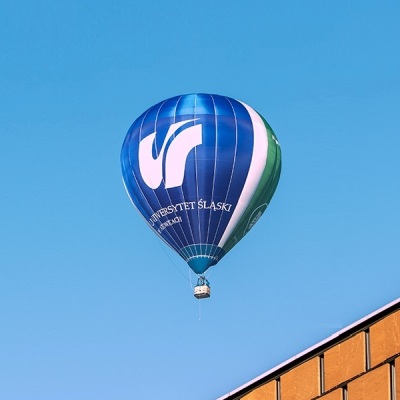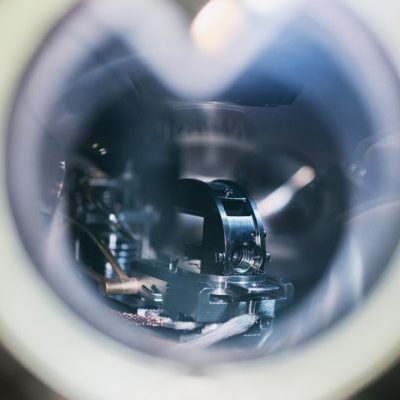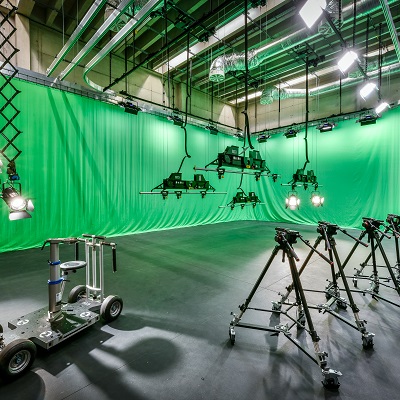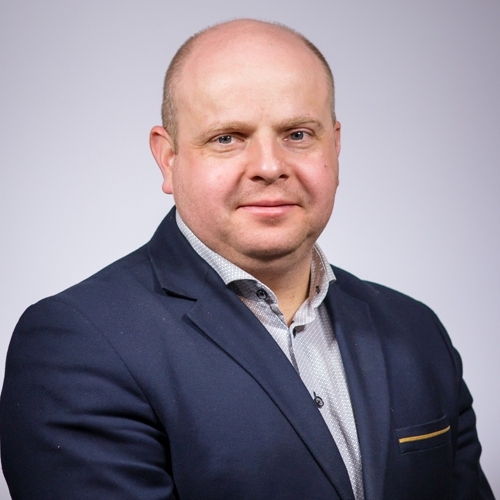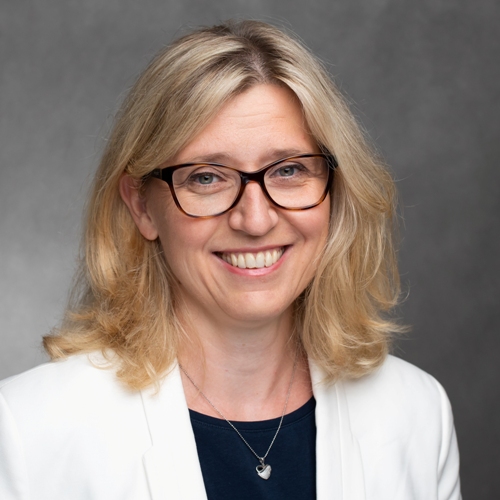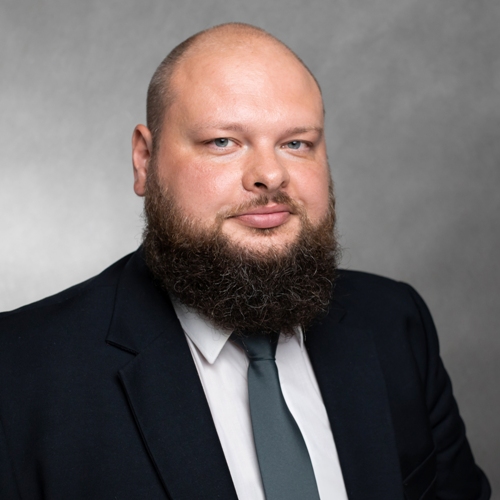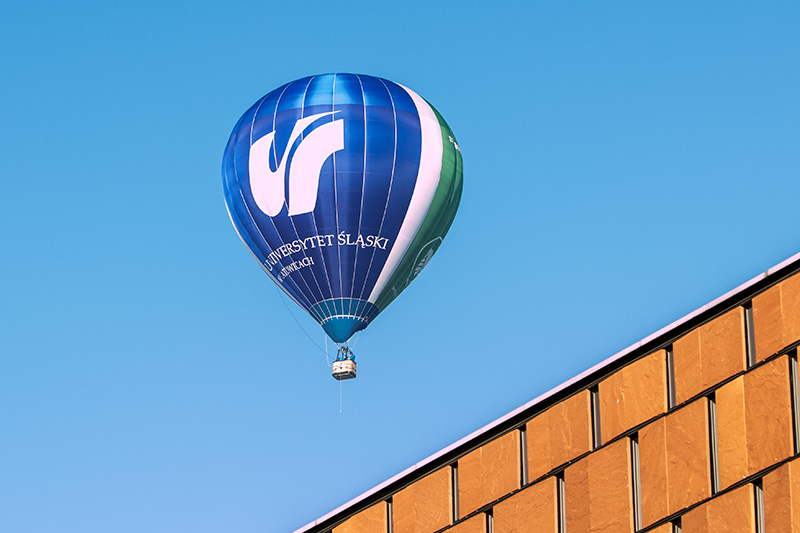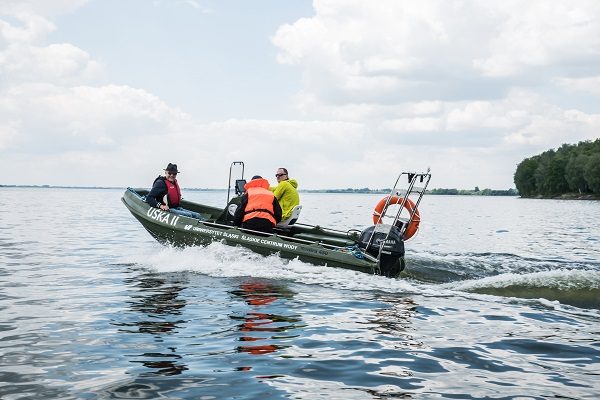INFRASTRUCTURE
LALBORATORIES AND WORKSHOPS
The University of Silesia in Katowice has over 200 laboratories, workshops and ateliers equipped with various tools and machines (around 7.000 items) that allow for conducting the basic tests in the scope of physics, chemistry, biology, material science and engineering, biomedical engineering as well as in earth and related environmental sciences. Apart from the large number of equipment used by exact sciences and natural sciences, also humanities, social and artistic disciplines make use of laboratories and ateliers: film studios, photo studios, musical studios and art workshops. Research and artistic infrastructure is maintained, equipped and modernised, among others, from the central university fund.
Among the unique infrastructure it’s worth to mention the balloon for testing the atmosphere quality | photo: University of Silesia,
electron correlation microscopes | photo: materiały UŚ
film studio of the Krzysztof Kieślowski Film School | photo: Krzysztof Szlapa
Research, Educational and Artistic Infrastructure Office
If you have any questions concerning laboratories, research workshops or ateliers at the University of Silesia in Katowice, contact the team of the Research, Educational and Artistic Infrastructure Office.
photo: Agnieszka Szymala
PhD Eng. Marcin Libera
head of the office
e-mail: marcin.libera@us.edu.pl
tel. +48 572 334 816
photo: Agnieszka Szymala
Stella Hensel-Bielówka, PhD
e-mail: stella.hensel-bielowka@us.edu.pl
tel.: +48 32 359 22 85
photo: Agnieszka Szymala
PhD Eng. Tomasz Gaweł
e-mail: tomasz.gawel@us.edu.pl
tel.: +48 32 359 22 85
Did you know?…
ULKA
Of the 50 most polluted cities in the European Union, 36 are located in Poland. Scientists from all over the world join the comprehensive fight against smog-related threats. Also the scientists of the University of Silesia, who test the air quality with the help of the first and only nationwide aerial laboratory in the basket of a manned hot-air balloon. The balloon is a part of the University Laboratories for Atmosphere Control (ULAC). It flies in circles above the cities of the Silesia agglomeration and collects comprehensive data that allows the researchers to create a pollution map of the agglomeration.
photo: Agnieszka Szymala
Pop-science article
A Flying Laboratory Checks Air Quality
„No Limits” no. 1 (1)/2020
From the beginning, scientists from the University of Silesia employed at the Institute of Earth Sciences at the Faculty of Natural Sciences have researched environmental pollution. It is therefore not surprising that, since 2016, they use the first and nationwide only aerial laboratory in the basket of a manned hot-air balloon. The balloon takes the University Laboratories for Atmosphere Control (ULAC) to a height of 4 kilometers. It flies in circles above the cities of the Silesia agglomeration and collects comprehensive data regarding the quality of the air which its inhabitants breathe…
USKA II
Scientists associated with the Silesian Water Centre of the University of Silesia in Katowice can conduct research using the newly purchased research boat. USKA II, equipped with specialist measuring devices, may be transported to every place where analyses are performed. Thanks to USKA II the experts can evaluate water quality, conduct barometric tests of water reservoirs and monitor them. They can also work on the reclamation programmes for polluted areas.
photo: Marek Grucka
Pop-science article
Scientific and research expedition “Clean Vistula? Why Not?”
„Gazeta Uniwersytecka” no. 11 (291)/2021
13 days, almost 1000 km, kayak and research boat, over 100 samples taken for analysis – this is how you can summarise the research expedition “Clean Vistula?” Why Not? ”, Which was attended by experts from the Silesian Water Centre of the University of Silesia and employees of the Why Not Foundation – the originator of the project. Scientists decided to analyse the variability of water quality parameters in the Vistula over almost 1000 km of its course, while social activists promoted physical activity and a healthy lifestyle. One goal was closely related to the other, because the Vistula has great recreational potential If the water quality and infrastructure are properly taken care of, the river may soon become more accessible to tourists. . And there is plenty to admire, as the participants of the unique expedition found out.






